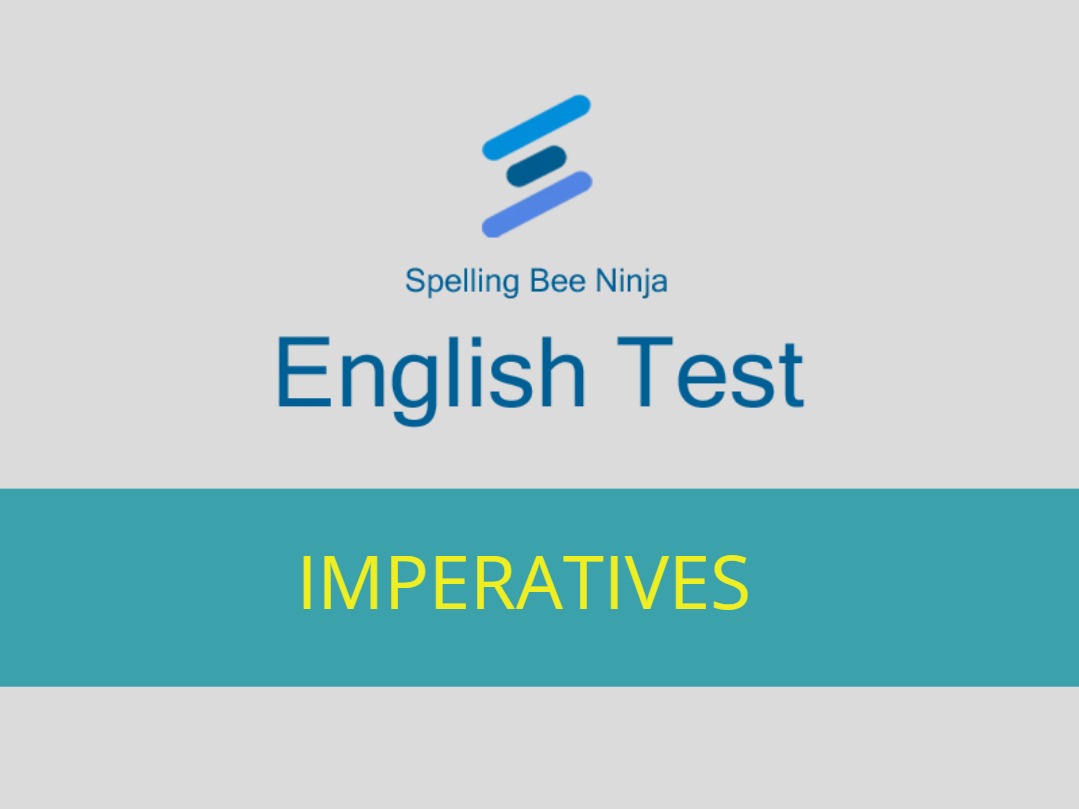The imperative form is one of the most commonly used and powerful structures in the English language. Whether you’re giving instructions, offering advice, making a request, or even issuing a warning, the imperative gets straight to the point. For English learners—especially ESL students and K–12 learners—understanding the imperative mood is essential for both writing and everyday conversations.
Unlike other sentence structures that require a clear subject and verb, the imperative often omits the subject, since it is usually implied (typically “you”). For example, the sentence “Close the door” doesn’t mention you, but the instruction is directed at the listener. This simplicity makes it effective but also tricky for learners to fully grasp its nuances—especially when comparing it with similar conditional or modal constructions like “should,” “could,” or “would.”
This quiz is designed to reinforce your understanding of the imperative form and distinguish it from related grammar structures. You’ll be asked to identify commands, choose correct verb forms, and recognize the differences between direct orders and polite suggestions. The quiz will also test your ability to spot improper use of the imperative, including incorrect subject placement or misuse in formal contexts.
Each question has four answer choices, and only one is correct. After choosing your answer, read the explanation to understand why it’s correct—or why it’s not. This will deepen your grammar skills and boost your confidence in using imperatives correctly.
Whether you’re a student, a teacher, or someone brushing up on grammar for writing or conversation, this quiz will sharpen your command of this vital grammatical form. Good luck!
- 🎓 English Test – Parts of Speech
- 🎓 English Test – The Future Perfect Continuous Tense in English
- 🎓 English Test – Pronouns in English
- 🎓 English Test – Sentence Structure
- 🎓 English Test – Future Perfect Tense
- 🎓 English Test – Future Continuous Tense
- 🎓 English Test – Future Simple Tense
- 🎓 English Test – Past Perfect Continuous Tense
- 🎓 English Test – Past Perfect Tense
- 🎓 English Test – Past Continuous Tense
- 🎓 English Test – Present Simple Tense
- 🎓 English Test – Past Simple Tense
- 🎓 English Test – Present Perfect Continuous Tense
- 🎓 English Test – Present Perfect Tense
- 🎓 English Test – Present Continuous Tense
- 🎓 English Test – The 12 Tenses in the English Language
- 🎓 English Test – Modal Verbs
- 🎓 English Test – Could, should and ought
- 🎓 English Test – Will vs Shall
- 🎓 English Test – What vs Which
- 🎓 English Test – Suffixes
- 🎓 English Test – Prefixes
- 🎓 English Test – Pronunciation
- 🎓 English Test – Misspelled Words
- 🎓 English Test – Writing an Essay
- 🎓 English Test – Writing an Email
- 🎓 English Test – Idiomatic Expressions
- 🎓 English Test – Business English
- 🎓 English Test – Writing a Letter
- 🎓 English Test – Writing Numbers
- 🎓 English Test – Adjectives
- 🎓 English Test – Mastering Imperatives in English
- 🎓 English Test – Cultural Awareness
- 🎓 English Test – Homophones
- 🎓 English Test – Difficult Words
- 🎓 English Test – Conditionals
- 🎓 English Test – Types of Phrases
- 🎓 English Test – Comparative and Superlative Adjectives
- 🎓 English Test – Types of Adverbs
- 🎓 English Test – Formal vs. Informal Language
- 🎓 English Test – Direct and Indirect Speech
- 🎓 English Test – Understanding Common Sentence Errors
- 🎓 English Test – Question Formation in English
- 🎓 English Test – Gerunds and Infinitives
- 🎓 English Test – Clauses
- 🎓 English Test – Possessives
- 🎓 English Test – Noun Types
- 🎓 English Test – Conjunction Words
- 🎓 English Test – Tricky Words
- 🎓 English Test – Prepositions
- 🎓 English Test – Adverbs
- 🎓 English Test – Active and Passive Voice
- 🎓 English Test – How to use Punctuation
- 🎓 English Test – An overview of English tenses
- 🎓 English Test – How to use Articles in English


